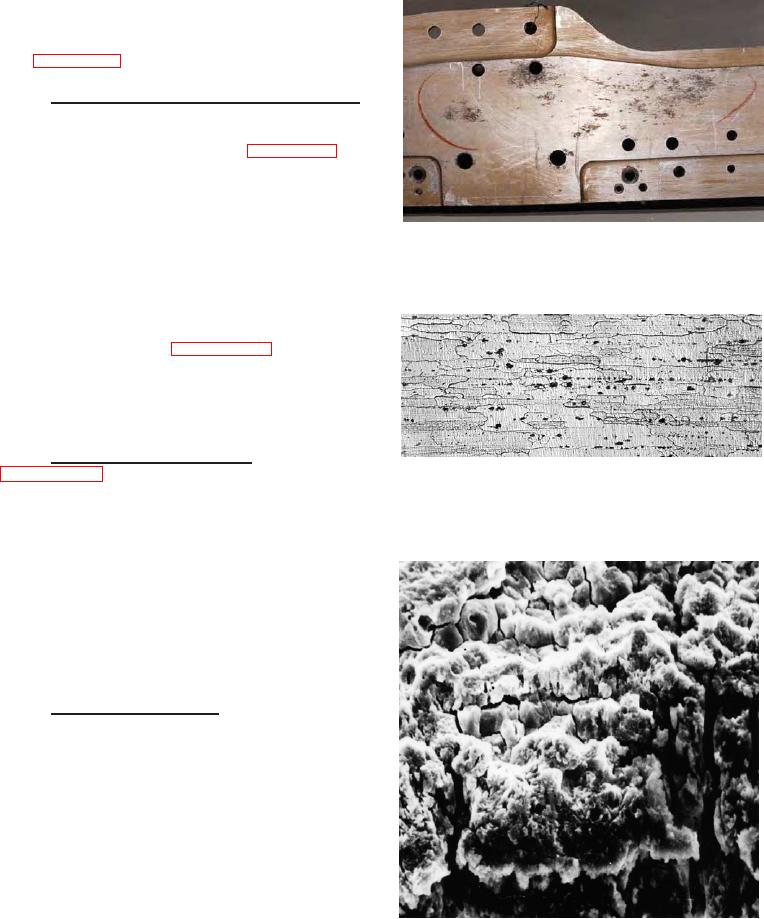
01 March 2005
NAVAIR 01-1A-509-1
TM 1-1500-344-23-1
TO 1-1-689-1
containing ions (such as seawater). Stainless steels
are most susceptible to pitting damage, although
aluminum, magnesium, and copper are often attacked
(see Figure 3-10).
3-9.4. I N T E R G R A N U L A R
CORROSION.
Intergranular corrosion is an attack on the grain
boundaries of the metal. A highly magnified cross
section of any commercial alloy (see Figures 3-11 and
3-12) shows the granular structure of the metal. It
consists of quantities of individual grains, each having
a clearly defined boundary, which chemically differs
from the metal within the grain. Frequently the grain
Figure 3-10. Pitting of an Aluminum Wing Assembly
boundaries are anodic (tend to corrode more easily) to
the metal within the grain. When an electrolyte is
present, rapid selective corrosion of the grain
boundaries occurs. High strength aluminum alloys,
which depend on precipitated phases of alloying
elements for strength, are particularly susceptible to
intergranular attack. Figure 3-13 shows how
intergranular corrosion progresses in 7075-T6
aluminum alloy adjacent to steel fasteners. In this
example, the grain boundaries are anodic to both the
metal grain and the steel fastener.
3-9.5. EXFOLIATION CORROSION. Exfoliation (see
Figure 3-11. Cross-Section of 7075-T6 Aluminum Alloy
Figures 3-14 and 3-15) is an advanced form of
intergranular corrosion where the surface grains of a
metal are lifted up by the force of expanding corrosion
products occurring at the grain boundaries. The lifting
up or swelling is visible evidence of exfoliation corrosion.
Exfoliation occurs on extruded, rolled, wrought, and
forged high strength aluminum and magnesium parts.
This type of corrosion most often occurs on extruded
sections of metal and is found primarily in aluminum
sheet around steel fasteners. Its prevention involves
separating the aluminum and steel by a barrier, such as
zinc-chromate primer or sealant.
3-9.6. CREVICE CORROSION. Crevice corrosion is
one of the most familiar types of corrosion. Field
experience shows that this type of corrosion may occur
in any crevice where a stagnant solution has pooled.
Crevices are usually located at gasket surfaces, lap
joints, and under bolt or rivet heads. Crevice corrosion
occurs because the environment of the local area is
very different from the larger environment. As a result,
the metal surfaces, even though they may be the same
metal, have different activities, and corrosion occurs
inside the crevice. This kind of corrosion can also occur
when a surface is covered by a foreign material. Methods
to minimize crevice corrosion include closing the crevice
Figure 3-12. Scanning Electron Micrograph of a
Corroding Aluminum Surface

